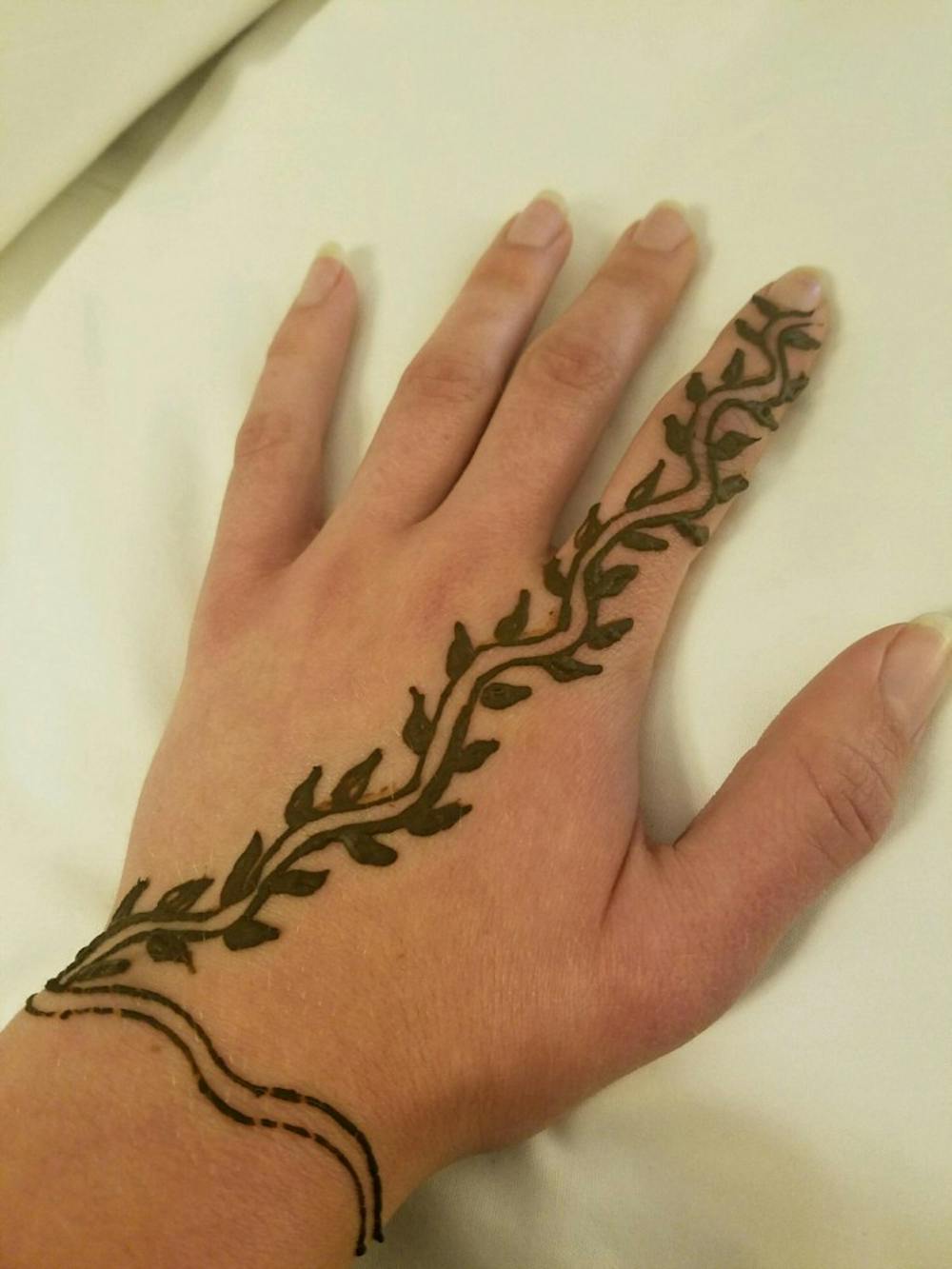Eyes, dark brown, almost black, peered between two sheaths of fabric. She said nothing that was not said through her gentleness as she took each of our hands in hers. The mother.
Eyebrows that crept toward dark eyes and a soft smile on a round face. Her hijab crept low on her forehead, covering her hair and her neck, but not her words, her words she spoke from brown-pink lips. The daughter.
Hair, thick, inky black and wavy like seaweed. She was Muslim, too. She had much to say. The woman.
Burnt red, sunshine orange and honey brown hair falling straight and curling haphazardly. My two sisters, my cousin, my aunt and myself — none of us Muslim.
We mostly listened.
Walking toward Times Square in New York City, we stopped by a table on the street where women were giving free henna tattoos. To the right, men managed a table stacked with Qurans while five or six children played, dodging people on the street.
They were all a part of the same Muslim family, and they came to the city every Saturday to teach people about Islam.
While we huddled under my aunt’s umbrella with the mother and the daughter, we talked as henna ink crumbled on our skin.
The third woman, who was not a part of the family, stopped to argue with the daughter, to say the mother was wrong to cover herself in the name of Islam. Three women, one religion, three interpretations, many questions.
Five months later, I am sitting with two women, asking my questions. Sarah Abdulgaffar and Esraa Alhawsawi moved from western Saudi Arabia in 2013 and spent a year in Philadelphia learning English before they began their master’s programs in the Shippensburg University Communication/Journalism Department. Sarah wears a dark blue hijab and Esraa keeps her crinkle-cut curls loose.
They are both Muslim, however, they do not identify themselves as Muslims but as people.
“I don’t know why people always try to identify someone by his or her religion,” Sarah says, her earnest eyes like white cups filled with black tea. “We all are human beings. This is a man, this is a woman. It doesn’t matter if you believe in something. What matters is your attitude or how you behave with other people and how you treat other people.”
I am surprised by Sarah’s answer. I expect her to say she puts her Muslim identity before everything else — Muslim woman, Muslim student, Muslim whatever career field she chooses, Muslim everything. How wrong I am. How wrong the world is.
When I stood under my aunt’s black umbrella in New York City, I thought I was talking and listening with three very different Muslims, but what I should have realized was that I was with three different people.
Identity is not about the religion, but the faith and principles behind it, Esraa tells me. Esraa says she is a “reflection” of her faith, not the faith itself.
Within Islam, there are many different reflections of the religion shining through people.
“Each person has their own perspective,” Sarah says. “Maybe we have the same belief, but how we apply this belief is related to how we see, our perspective.”
In New York City with those three women, the point of contention was the mother’s dress, which covered all but her eyes and hands.
The black-haired woman told the daughter she and her mother were practicing their faith incorrectly. The daughter was 17, still in high school, but she never lost her composure. This was not the worst confrontation she had been a part of, the daughter said.
“How important is the hijab in Islam?” I ask Sarah and Esraa.
“There is hijab in Islam, but there is no Islam in hijab,” Sarah says.
Some people wear a hijab but don’t always follow the Islam faith in a good way.
Often times people confuse tradition and principle when they wear a hijab or a burka because that’s what the women before them did, Sarah says. No, it is a choice, and a choice that should be made based on religious principles.
The Quran asks Muslim women to “make” hijab, not wear it because hijab is more than just clothing; it is the ideas behind it that are important, Esraa tells me.
“The real hijab is our faith, and our moral in acting with each other,” Esraa says. “I really do believe that hijab is not only clothes. It’s in our hearts and our thoughts, ideas, opinions.”
The 17-year-old daughter in New York City wears a hijab so that when she talks, people focus on her words not her beauty, because what she has to say is more important than her appearance, she told us.
The woman with loose hair could not see past the hijab as she talked over the daughter’s words, but I was listening.
Hijab or no hijab, I was listening to a girl more similar to me than different.
After the henna dried on my hand, I was left with a dark orange vine sprouting delicate leaves that wove across my hand and down my index finger.
The henna began to wash off by the next day, first fading from my finger until it dissipated completely from my hand.
Water and time had washed away the ink, but the tattoo still burns orange on my hand, across my arm, through my veins, to my heart, forever in my mind.




The Slate welcomes thoughtful discussion on all of our stories, but please keep comments civil and on-topic. Read our full guidelines here.